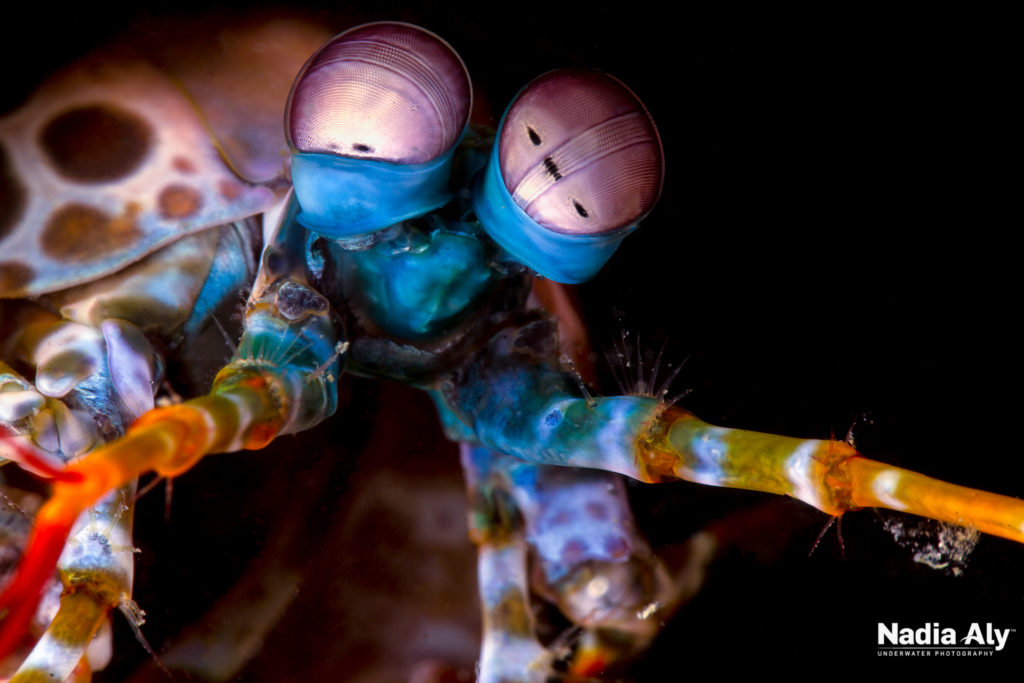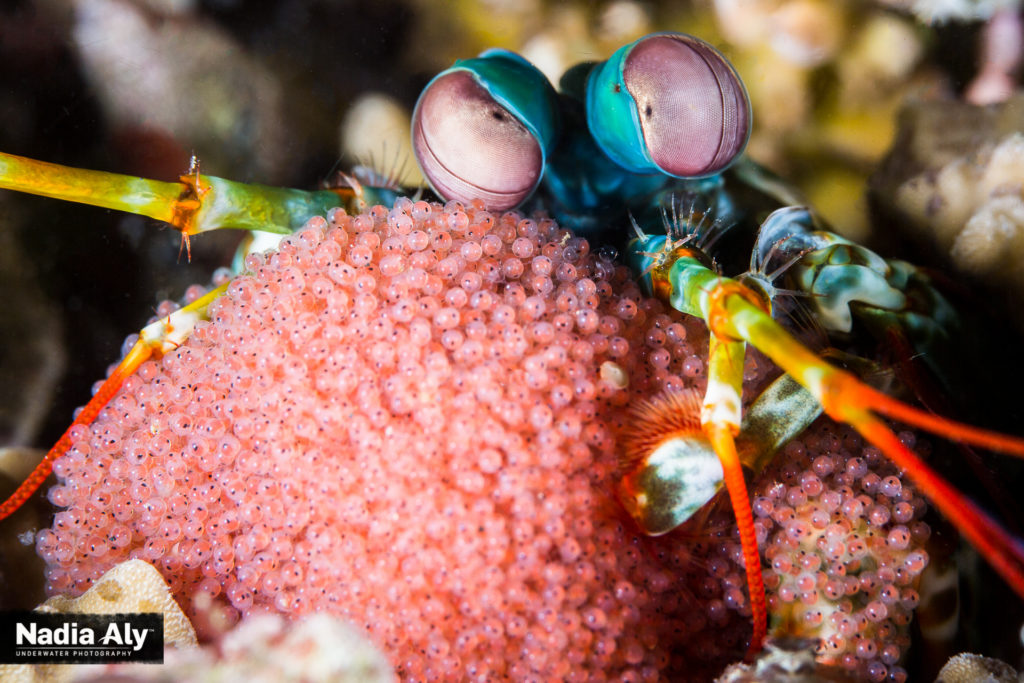Divers often think of the diminutive mantis shrimp as harmless because of its size. The truth is that the mantis shrimp is an underwater nightmare for its prey, and one of the most creatively violent creatures in the ocean.

What is the mantis shrimp?
The mantis shrimp, or Stomatopoda, are marine crustaceans. Called sea locusts by ancient Assyrians and prawn killers in Australia, more recently they’ve been called “thumb splitters,” because of their ability to inflict painful cuts on divers or those who handle them. There are over 450 different species of mantis shrimp. Most grow to around 4 inches long, though a few can reach lengths of almost 12 inches. They can vary in color from simple brown to vivid neon and are among the most important predators in shallow tropical and sub-tropical waters.
Where will you find them?
Although they’re quite common, mantis shrimp are also quite misunderstood. These typically solitary animals spend most of their lives hiding in rock formations or buried away in holes and burrows, rarely exiting except to feed or relocate. Most species live in the tropical and sub-tropical seas of the Indian and Pacific Oceans between eastern Africa and Hawaii. They have been known to inhabit temperate seas as well.
What makes them incredible?
The mantis shrimp falls into two distinct groups, determined by the type of claws they have — “spearers” or “smashers.” The smashers have some of the fastest punches in the animal kingdom, extending their closed, club-like fists with the same acceleration and velocity as a gunshot from a .22-caliber rifle. In less than 3 milliseconds they can strike prey with 1,500 Newtons of force. Their limbs move so fast that the water around them boils in a process called supercavitation. As these supercavitation bubbles burst, they form an underwater shockwave, which can be used to kill prey.
Incredibly, it’s been shown that the speed and temperatures generated from the mantis-shrimp strike can also produce light bursts. Because of these incredible punching claws, mantis shrimp rarely live in aquariums, as they tend to kill all their tank-mates. They have also been known, on the rare occasion, to break through the aquarium glass with a single punch.

The majority of mantis shrimp, however, are spearers. While otherwise very similar, they differ from smashers in the tips of their arms; whereas smashers feature “fists,” spearers hit their prey with an open, barbed snare. The two shrimp also differ in their style of hunting. Smashers leave their burrows to seek their sedentary, hard-shelled prey. Spearers are ambush predators, quietly waiting to pounce on soft, fast-moving prey as it swims by their burrow within striking distance.
It’s all in the eyes
In addition to their truly remarkable punching skills, the mantis shrimp has another trick up its sleeve. Their eyes are the most advanced in the animal kingdom, with each eye creating three separate images. They also have 16 different color-cone receptors inside their eyes. Humans only have three, so mantis shrimp can, in fact, detect colors that we can’t even imagine existing in our world.
So, if you see a mantis shrimp on a dive, know that it’s more than a shy, retiring crustacean. Keep your eyes on those claws, though, especially if you’re diving with a camera, or you may end up with a more lasting souvenir of the encounter than you were looking for.

